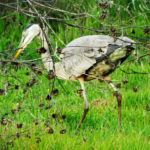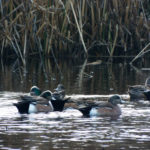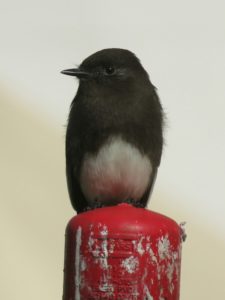I went hiking at the marsh preserve this weekend and was astonished at just how many different types of birds I saw. Five species of ducks alone (it is winter, after all) — not just the more common mallards, but shovelers, teals, wigeons, and one I hadn’t heard of before called redheads (for obvious reasons). The usual coots, egrets and Canada geese. Red-winged blackbirds, sparrows, a heron that was standing so still I started to wonder if it was a statue, and a very patient hawk that sat in a tree completely ignoring me and my camera until I was finished and it flew off to another tree.
I also heard frogs all over the place, but couldn’t actually see any of them. I asked about them at the visitor center and apparently the pacific tree frog can be very small, about the size of a quarter, but they can still be very loud when singing in a chorus. Next time I’m there, if the frogs are still in season, I need to at least record the audio.


















